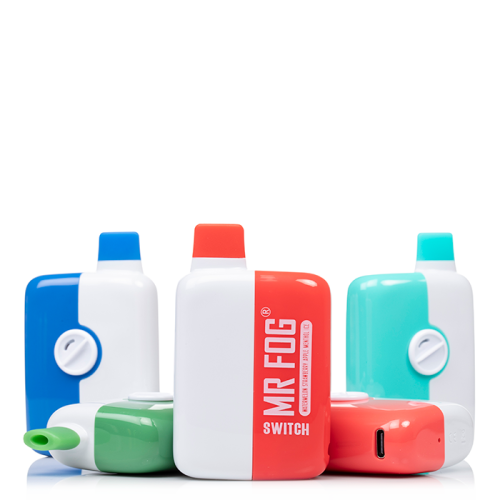So, you’re building a product and thinking about selling it in Europe. Maybe it’s a sleek new coffee machine, a toy your niece would love, or a life-saving gadget for hospitals. Whatever it is, if you’re planning to sell it in the European Economic Area (EEA), there’s a little two-letter symbol that suddenly means a whole lot: CE.
Let’s be honest—it can feel like just another bureaucratic hoop to jump through. But the truth? CE certification isn’t just about ticking boxes. It’s about trust, responsibility, and your reputation as a manufacturer. Let’s talk about what that really looks like.
What Is CE Certification (And Why Is Everyone Obsessed With It)?
CE stands for Conformité Européenne, which, yes, sounds fancy. But the idea behind it is pretty straightforward. When your product carries that CE mark, it means you’ve taken responsibility for making sure it’s safe, works as intended, and meets the standards expected in the EEA.
Think of the CE mark like a silent handshake. You’re telling customers, distributors, and customs officials: “Hey, we’ve checked this. It’s good to go.”
But here’s the twist—there’s no central CE police force handing out certificates. You’re actually the one who declares that your product meets all the necessary requirements. Sounds a bit wild, right? Let’s unpack that.
You’re the One in Charge (Seriously)
Here’s where some folks get a little surprised: **you don’t “get” CE certified—**you self-declare it. Yep. That means if you’re the manufacturer, you’re responsible for making sure the product checks all the required boxes.
Now, that’s not a free-for-all. You’ve got to follow a structured process that includes testing, documentation, and maybe working with third-party experts (depending on what you’re making).
It all comes down to this: you create the evidence that your product is compliant, and then you back it up with something called an EU Declaration of Conformity. That’s the official document where you sign on the dotted line and say, “We did our homework.”
Kind of empowering, actually. But also a little intimidating.
The CE Process in a Nutshell (Hold the Legalese)
Let’s walk through what actually needs to happen. Don’t worry—this isn’t a checklist you need to memorize. Think of it more like a behind-the-scenes look at what goes into that tiny logo.
Step 1: Know the Rules That Apply to You
Every product type has different expectations. A medical device? Not the same as a toaster. You’ve got to figure out which standards are relevant to your product. This isn’t just busywork—it’s your roadmap.
Step 2: Design With Compliance in Mind
You can’t just build a thing and hope it’s compliant later. CE certification starts way back in the design phase. This means thinking through everything from materials and components to how users interact with your product.
Sometimes, people wait until the end to think about CE. And honestly? That’s where a lot of mistakes happen. It’s like building a house and checking the blueprints after you’ve already poured the concrete.
Step 3: Run the Right Tests
Depending on your product, you might need to conduct specific safety, performance, or electromagnetic compatibility tests. Some of these you can handle yourself (if you’ve got the right tools and expertise). Others might require a third-party lab.
Quick tip? Keep detailed records of everything. And I mean everything. Think user manuals, design drawings, risk assessments, test reports—you’ll need to compile a full technical file.
Step 4: Sign the Declaration
Once you’re confident your product meets all the requirements, you write and sign the EU Declaration of Conformity. This is where you officially state that your product complies with all relevant directives and standards.
And finally…
Step 5: Affix the CE Mark
You’ve earned it. Now you can print, engrave, emboss, or laser-etch that little CE logo onto your product (and packaging, and manuals, and promotional materials… you get the idea).
“But What If We Skip a Step?”
Honestly? Don’t.
Skipping parts of the process doesn’t just put you at risk legally. It also puts your users at risk—and your company’s reputation right alongside them. The CE mark is visible proof of your product’s integrity. If something goes wrong and you can’t back it up with documentation? That’s a problem no one wants to deal with.
Also, your product can be pulled from shelves. Imagine explaining that to your investors—or your customers. Not fun.
It’s Not Just About Compliance—It’s About Confidence
Let’s pause for a second. Because even though we’re talking about certification, testing, and documentation, this whole process is really about confidence.
When a customer sees that CE mark, they don’t see your test results or technical drawings. But they feel something—trust. They trust that you’ve done your part. That what they’re buying won’t hurt their child, overheat in the middle of the night, or break down at a critical moment.
And if you’re a business owner or product designer? That kind of trust is everything. It’s what builds loyalty, reputation, and word-of-mouth growth.
Common Missteps (And How to Dodge Them)
Even experienced manufacturers sometimes trip up here. A few of the big ones:
- Slapping on the CE mark without documentation
That’s like handing in a college paper without actually writing it. The mark means nothing without the proof behind it.
- Assuming a third party will handle everything
Unless your product requires third-party involvement, the responsibility still falls on you. You can hire help, sure—but you’re still steering the ship.
- Ignoring updates
Standards change. What passed last year might not cut it this year. Keeping your files updated isn’t just nice—it’s necessary.
Real Talk: It’s Not as Overwhelming as It Sounds
Yes, there’s a lot to keep track of. But once you understand the flow, the CE process becomes part of how you think about your product. It’s like brushing your teeth—you don’t need a manual, you just do it as part of your routine.
Many companies even start using CE requirements as part of their internal quality checklists, long before the product hits the market. And honestly? That’s smart. Because it means fewer problems later.
If you build CE thinking into your design process, you’ll avoid the scramble at the end. No more “Oh wait, do we need that test?” or “Where did we put that report from last year?” moments.
The Quiet Power of Doing It Right
Here’s something that doesn’t get said enough: following the CE process thoroughly can actually make your product better.
You’ll catch weak points early. You’ll think more about user safety. You’ll improve documentation, training, and usability. And maybe most importantly—you’ll sleep better at night knowing you’ve done it right.
Because while CE certification is technical, the real story is human. It’s about trust. About protecting people. About building things you’re proud to put your name on.
Final Thought: It’s a Mark, but Also a Milestone
That little CE logo? It’s just two letters. But getting there is a journey—a journey of design, testing, documenting, and declaring that what you’ve made is safe, reliable, and ready for the world.
And sure, it’s paperwork-heavy. And yeah, it can be a headache if you leave it too late. But it’s also something to be proud of.
Because behind every CE mark is a team that cared enough to do things right.
So the next time you see it? Take a second. You’ll know just how much went into making it happen.



